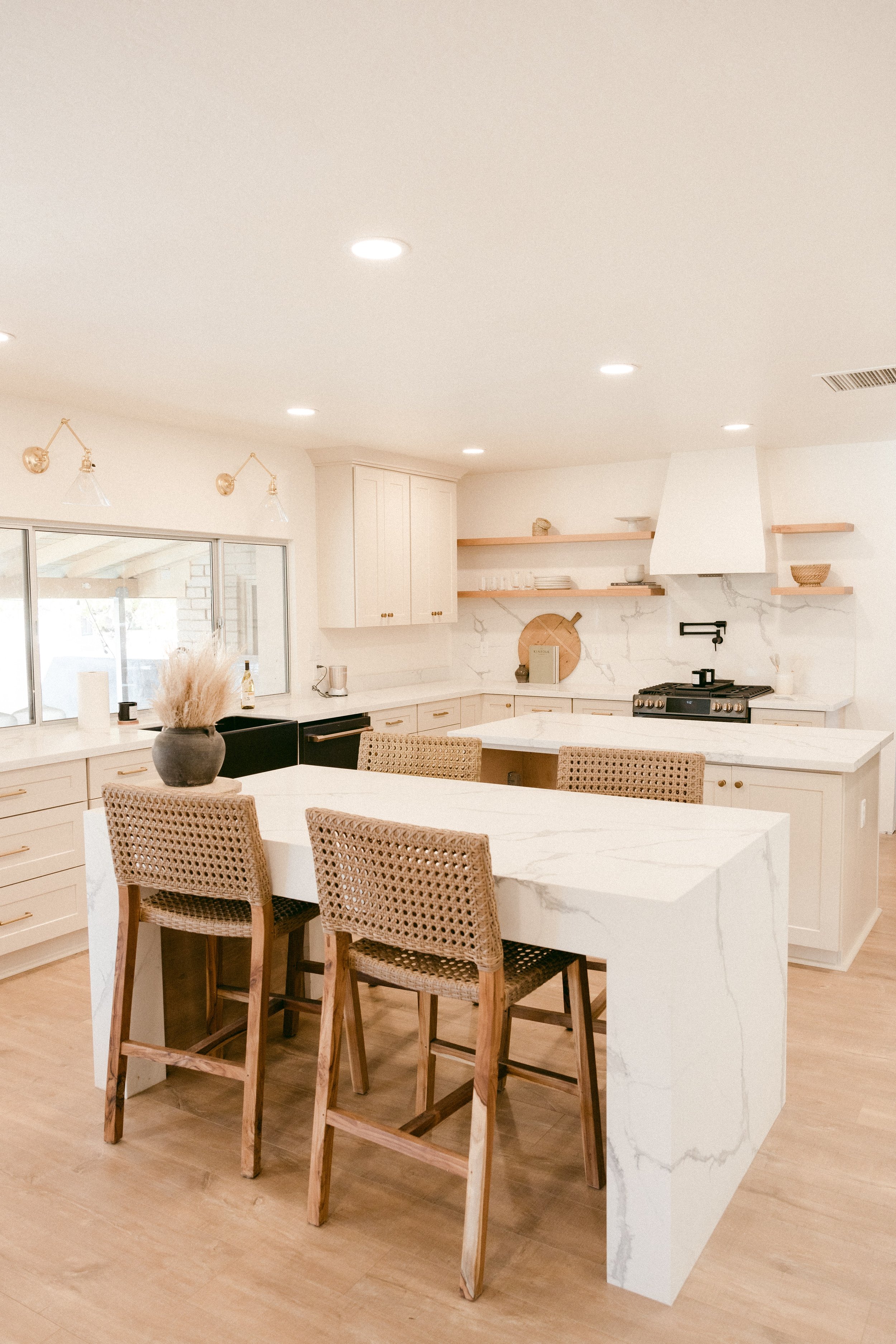Scandinavian Interior Design: The Ultimate Guide
Scandinavian design has been an all-time favourite among interior designers and homeowners for many years now. Originating in the Nordic countries of Sweden, Norway, Denmark, and Finland, this design style has gained worldwide popularity due to its clean lines, neutral colours, and emphasis on light and space. At its core, it's all about creating a space that is simple, functional, and aesthetically pleasing.
If you're looking to bring a touch of Scandinavian style into your home, this comprehensive guide is for you! We'll cover everything from the basics of Scandinavian interior design to and how you can incorporate this style into your own home.
In this guide, we will cover the following topics:
What is Scandinavian Interior Design
Scandinavian Interior Design emerged in the early 20th century as a response to the harsh, cold climates of the Nordic countries. The long, dark winters meant that natural light was limited, so designers focused on creating bright, airy interiors that made the most of the available light.
At the same time, there was a growing interest in simplicity and functionality, resulting to the creation of furniture and accessories that were both beautiful and practical. These design principles became the foundation of Scandinavian Interior Design and have remained popular ever since.
Characteristics of Scandinavian Interior Design
Scandinavian Interior Design is characterised by a number of key elements, including:
Hygge: A Danish word that loosely translates to "coziness" or "contentment", hygge is an important aspect of Scandinavian Interior Design. It's all about creating a warm, welcoming atmosphere that makes you feel happy and comfortable.
Minimalism: This doesn't mean a lack of decoration, but rather a focus on clean lines and simplicity. It's about creating a space that is uncluttered and visually calming.
Functionality: Furniture and decor should be both beautiful and practical, with a focus on multi-functional pieces that serve multiple purposes.
Natural Elements: Natural materials such as wood, stone, and leather are preferred over synthetic materials. These materials are often left in their natural state, without any heavy finishes or treatments, which creates a sense of warmth and authenticity. Textures and patterns inspired by nature are also common.
Lighting and Colours: Rooms should be bright and airy, with an emphasis on natural light and neutral colour palette. White walls and ceilings are common, as are large windows that let in plenty of light.
Materials and Colours Used in Scandinavian Interior Design
Scandinavian Interior Design makes use of a variety of natural materials and a muted colour palette, including:
Wood: Light-coloured wood such as birch or pine is commonly used for furniture.
Leather: Leather adds texture and warmth to a space and is commonly used for seating.
Wool: Wool is commonly used for textiles such as cushions, throws, and rugs.
Neutral colour palette: Scandinavian design favours a light muted colour palette that includes shades of white, grey, beige and natural wood tones.
Furniture and Lighting in Scandinavian Interior Design
Scandinavian design favours furniture that is practical, multifunctional, and has clean lines. Commonly used furniture includes:
Sofas and chairs with simple designs and clean lines.
Coffee tables with storage space underneath.
Beds with built-in storage.
Shelving and storage units that maximise space.
Lighting is an essential aspect of Scandinavian design, and natural light is emphasised wherever possible. Commonly used lighting includes:
Pendant lights that provide focused light.
Table and floor lamps that add warmth and texture to a space.
How to Incorporate Scandinavian Interior Design into Your Home
Incorporating Scandinavian design into your home is easy and can be done in a few simple steps:
Focus on simplicity: Emphasise clean lines and a minimalist approach. Keep accessories and decor to a minimum
Choose natural materials: Incorporate natural materials such as wood, leather, and wool. These materials bring warmth and texture to the room.
Use light colours: Stick to a neutral colour palette that includes shades of white, grey, and beige.
Maximise natural light: Use light-coloured walls and large windows to maximise natural light.
Choose multifunctional furniture: Choose furniture that is practical and serves multiple purposes.
Add textiles: Use textiles such as cushions, throws, and rugs to add warmth and texture to a space.
Scandinavian-inspired Design Ideas for Various Rooms at Home
The principles of Scandinavian interior design can be applied throughout your entire home, from the living room to the bathroom, creating a cohesive and beautiful aesthetic. Here are some design inspirations to get you started:
Living room: Create a clean and minimalist look by choosing a neutral colour palette with shades of white, beige and grey as the base. Add occasional pops of muted pastel colours using throws and pillows to make the space more inviting. Incorporating natural materials such as wood, leather and linen for furniture and warm lighting fixtures can create a cosy ambiance.
Kitchen: Opt for open shelving or glass-fronted cabinets to display your collection of ceramics and glassware. Natural materials like wood and stone can create a warm and inviting atmosphere, and simple, streamlined cabinetry and a functional work surface can be chosen. Pendant lighting or a statement light fixture can be installed over the dining area for added interest.
Bedroom: Keep the bedding simple and comfortable with high-quality linens can create a cosy atmosphere. Incorporating a wool rug can add texture and warmth to the floor, and using soft, muted colours can create a calming atmosphere. You can also incorporate natural wood for the bed frame and bedside tables.
Bathroom: The bathroom is often the smallest room in the house so keep the space light and bright. Incorporating natural materials like stone and marble can add a luxurious feel, while using simple, streamlined fixtures and fittings can create a minimalist look. A large, statement mirror can also be installed to add depth and interest to the room.
Worried about overpaying for your home renovation?
Let AI be your superhero!
IDIT® Savings - AI Renovation Cost Saver
With this FREE innovative AI tool, you can scan renovation quotes with ease and identify cost-saving measures that won't compromise on quality.
You can now enjoy a successful renovation with additional savings from the savings report.
Conclusion
Scandinavian Design is a timeless and elegant style that has captured the hearts of many people around the world. Its minimalism, functionality, and natural materials make it a popular choice for homeowners who seek a cozy and warm living space.
Scandinavian interior design is a style that emphasises simplicity, functionality, and the use of natural light. By incorporating natural materials, a neutral colour palette, and multifunctional furniture, you can create a space that is both beautiful and practical. With these tips, you can easily incorporate Scandinavian design into your home and create a space that is warm, inviting, and functional.
Frequently Asked Questions
-
Ikea is a Swedish company that is known for its affordable furniture and home decor, and their design ethos is strongly influenced by Scandinavian design principles. While not all of Ikea's products are strictly Scandinavian in style, many of their designs feature clean lines, natural materials, and a minimalist aesthetic that is closely aligned with Scandinavian design.
-
Japandi design is a fusion of Japanese and Scandinavian design principles, combining the clean lines and simplicity of Scandinavian design with the warmth and texture of Japanese design. While both styles share a minimalist aesthetic and a focus on natural materials, Japandi design tends to incorporate more wood, earth tones, and tactile textures than traditional Scandinavian design.
-
Scandinavian design is a subset of Minimalist design, with a focus on functionality, simplicity, and warmth through the use of natural materials and textures. While Minimalist design often incorporates a more monochromatic colour palette and strict adherence to the "less is more" philosophy, Scandinavian design incorporates pops of colour and layers of texture to create a more inviting and comfortable space.
-
Yes, Scandinavian interior design can be easily combined with other styles to create a unique and personalised look. For example, you could combine Scandinavian design with bold elements for a more Contemporary feel.
-
Yes, Scandinavian design is often praised for its ability to make small spaces feel bright, open, and airy. Its focus on simplicity and functionality can help maximize the use of small spaces with built-in storage solutions and multi-functional furniture. And don't be afraid to get creative with storage solutions, like using hanging baskets or wall-mounted shelves to free up floor space.







